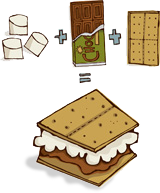What are some general instructional practices that can be beneficial to students who are learning to speak English?
Page 7: Teach Vocabulary
 Vocabulary instruction is another beneficial practice that teachers can use. ELs must understand vocabulary to make sense of English, and to understand what they are reading and hearing. Students may understand one meaning of a word but not know a second or third meaning (e.g., cell phone, plant cell, jail cell). Teachers should encourage students to think about how new words connect with other words they know. In addition, they must understand words commonly used during instruction (e.g., participate, summarize, analyze, demonstrate).
Vocabulary instruction is another beneficial practice that teachers can use. ELs must understand vocabulary to make sense of English, and to understand what they are reading and hearing. Students may understand one meaning of a word but not know a second or third meaning (e.g., cell phone, plant cell, jail cell). Teachers should encourage students to think about how new words connect with other words they know. In addition, they must understand words commonly used during instruction (e.g., participate, summarize, analyze, demonstrate).
[Teachers] must be permeated with the mind-set that ELs are learning words minute by minute.
Although students learn new words incidentally from reading and discussions, they also benefit from explicit instruction, guided practices, and frequent opportunities to practice using new words. Students need multiple exposures to vocabulary words in a variety of contexts in order to fully understand their meanings. Therefore, teachers should look for opportunities to reinforce vocabulary terms throughout the day.
Although math is one content area teachers may not think of as being vocabulary laden, it contains many complex terms. Listen as Kathy Escamilla describes how a math word problem can be confusing to ELs (time: 0:31).

Kathy Escamilla, PhD
School of Education
University of Colorado, Boulder
Transcript: Kathy Escamilla, PhD
Ann has sixty-four crayons. The number is eighteen more than Bill. Now, ninety-four percent of the English language learners thought you should add because of the word more. And so, when I have just a little bit of English, I’m doing the best I can and somebody told me when it says more it usually means add. So I know just enough language to get it wrong, right? Because really what you have to do is subtract.
To further illustrate how math problems can be confusing to ELs consider how teachers often use different vocabulary terms to convey the same meaning. As the graphic below illustrates, the math problem 18 – 9 = can be expressed in many different ways.
* Subtract 9 from 18.
* 18 minus 9 equals ______.
* What is the difference between 18 and 9?
* 9 from 18 equals ______.
* Take 9 away from 18.
* How much less is 9 than 18?
The following table describes some common language vocabulary characteristics of students at the beginning, intermediate, and advanced levels of second language acquisition.
| Vocabulary Usage | ||
| Beginning | Intermediate | Advanced |
|
|
|
|
x
academic vocabulary Terms and expressions used across academic subject areas that are considered crucial for student comprehension and learning, for example:
|
||

Teachers can help ELs focus on acquiring new vocabulary by:
- Rewriting instructions or emphasizing key words in the instructions
- Using graphic organizers to help students learn new vocabulary terms, learn the relationships among different words, and make connections with previous knowledge
- Showing pictures, diagrams, illustrations, and real objects to teach vocabulary
- Dramatizing or acting out action words
- Helping students connect the words to their own lives and experiences
- Providing examples of vocabulary words to differentiate when they have several meanings
- Connecting vocabulary to words in students’ home languages and pointing out the cognates
- Helping students to organize related words in different ways (e.g., by category, degree, part of speech)
- Posting words on a word wall or chalkboard for students to learn (e.g., key vocabulary words, commonly used words or phrases)
- Using note cards to help students learn transitional words (e.g., first, also, finally)

Example: The bilingual teacher suggests that Ms. Westerman create words-of-the-day for her students. She writes two words of the day on the board every morning. One of these words is a preposition, idiom, or common word with multiple meanings that can be confusing for ELs. The second of these words is a key science vocabulary term. After teaching these words, Ms. Westerman expects her students to use these words at least five times during the day. The students keep tally on each other as they hear students using the words correctly.
Activity
Read the math word problem below.
In two weeks George will attend Boy Scout camp. His mother will provide ingredients for s’mores. There are nine boys in his troop. Each Scout will prepare two s’mores. Each s’more has marshmallows, one half of a bar of chocolate, and one graham cracker. Calculate the quantity of ingredients George’s mom will have to provide for all of the boys.
- Are there any words above that a student from a different cultural background might not understand?
- As a teacher, how can you help a student who has recently moved to the United States to complete word problems such as this one?
1. Words that a student from a different cultural background might not understand:
| Vocabulary | ||
| Mathematical | Academic | Additional |
|
|
|
2. Student support for the sample word problem includes:
- Previewing material before beginning a new unit or lesson to determine vocabulary terms that might be pre taught
- Using pictures and real objects (i.e., realia) to:
- Help teach vocabulary whenever possible
- Provide contextual support and comprehensible input (e.g., have the ingredients to make s’mores on hand in the classroom and use index cards to label the ingredients)
- Modeling the use of vocabulary words and encourage students to use them repeatedly during the lesson
- Encouraging students to rephrase or rewrite word problems in simpler terms to ensure that they understand the meaning (e.g., use the term cookies in place of graham crackers)
- Asking students to write in journals to describe concepts used in word problems and encourage them to include illustrations to demonstrate these concepts
Note: The information above pertains to the sample word problem. Below are additional student supports for word problems. These include:
- Allowing students to work in groups or with a partner to solve word problems and to facilitate using academic language, practice mathematical skills, and increase conceptual understanding
- Asking students to create posters to demonstrate the processes they used for solving problems, and encouraging them to explain their posters to other students
- Providing a vocabulary chart to help students:
- Learn the specialized mathematical meanings of familiar words
- Identify words that have similar meanings (e.g., add, total, combine, count up, sum)
- Understand multiple meanings of words (e.g., column, table)
- Learn abbreviations commonly used in math (e.g., in., ft.)
- Restating and reviewing key concepts
- Asking students to use Venn diagrams to compare and contrast mathematical problems, while requiring them to use their mathematical vocabulary to make comparisons and contrasts